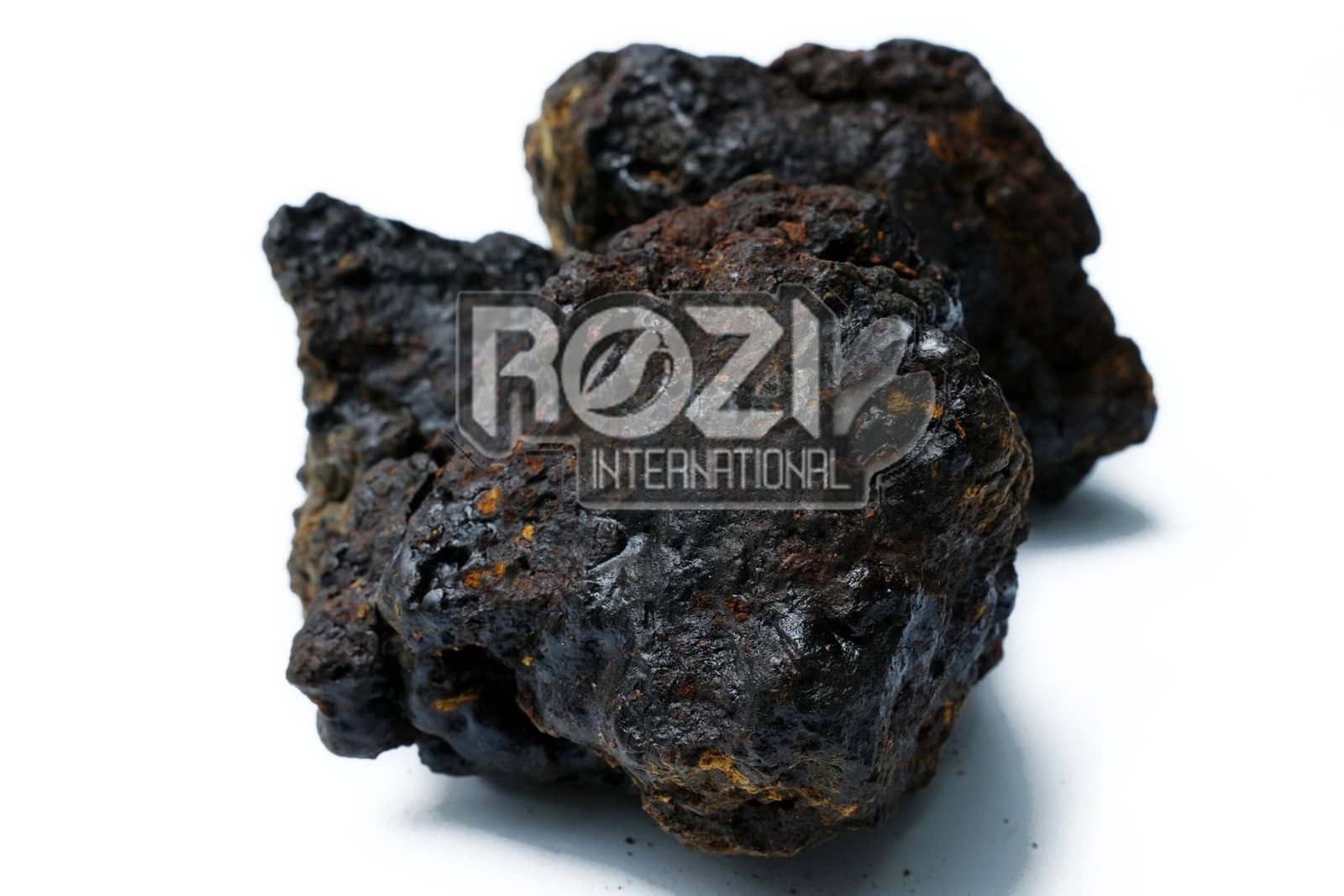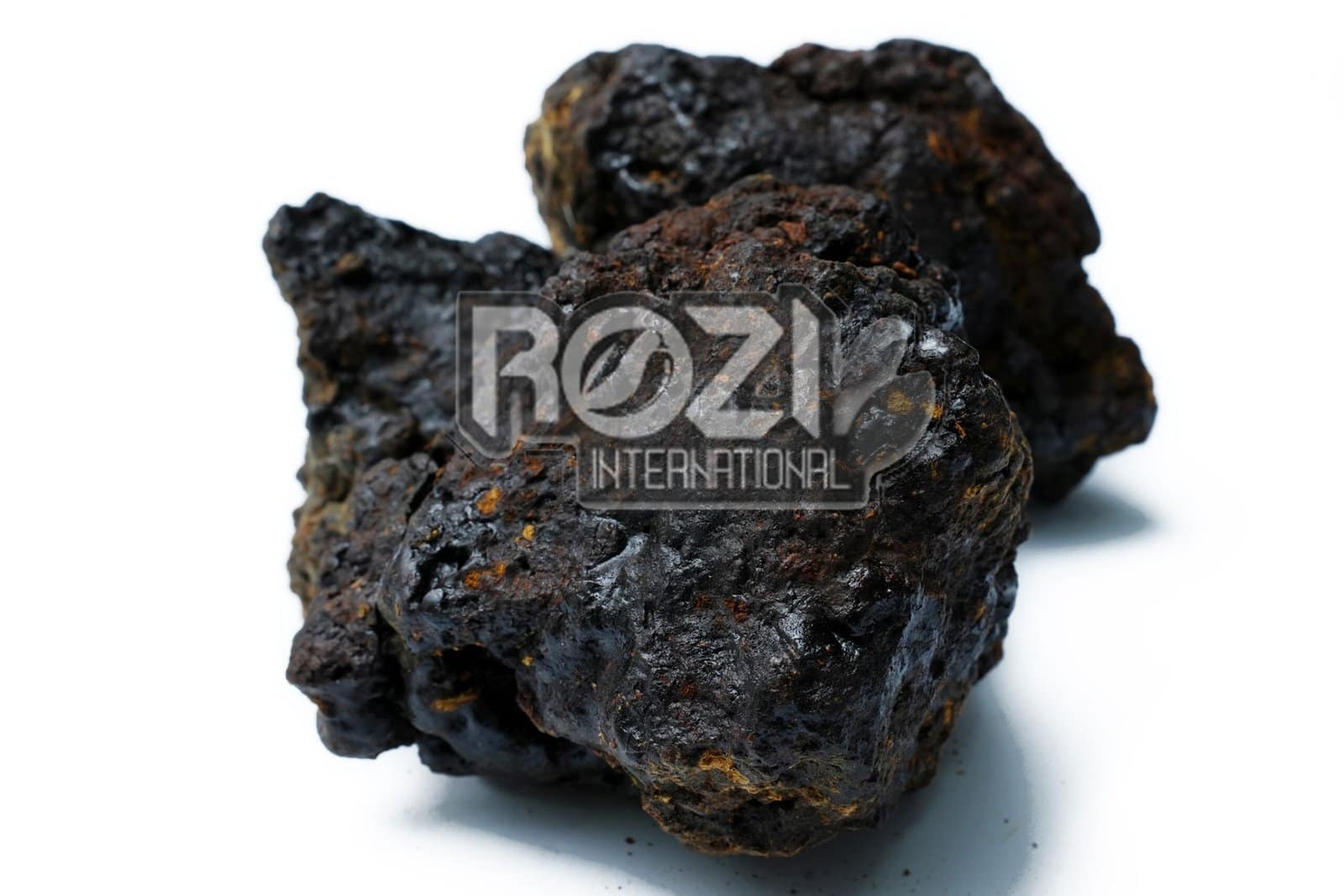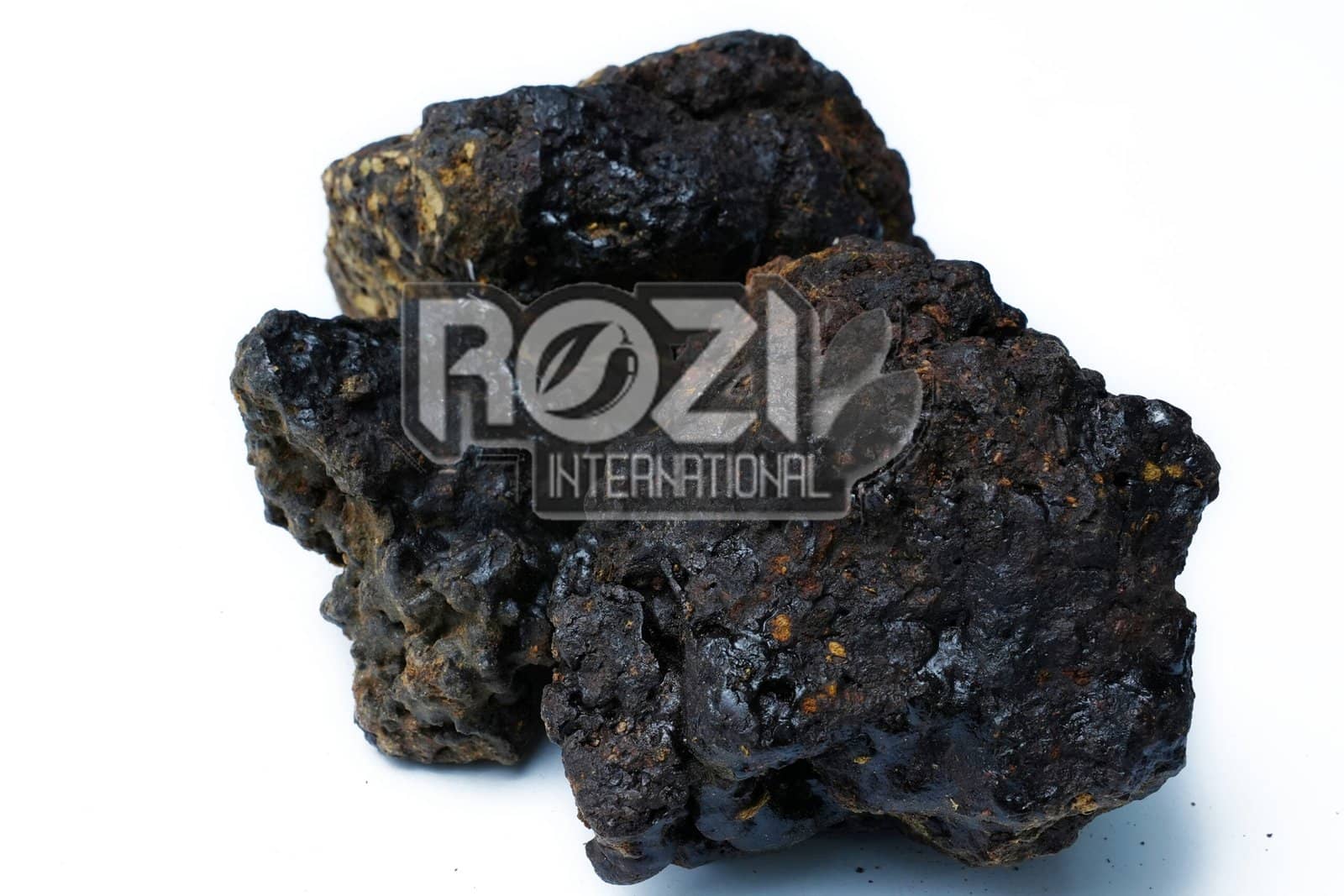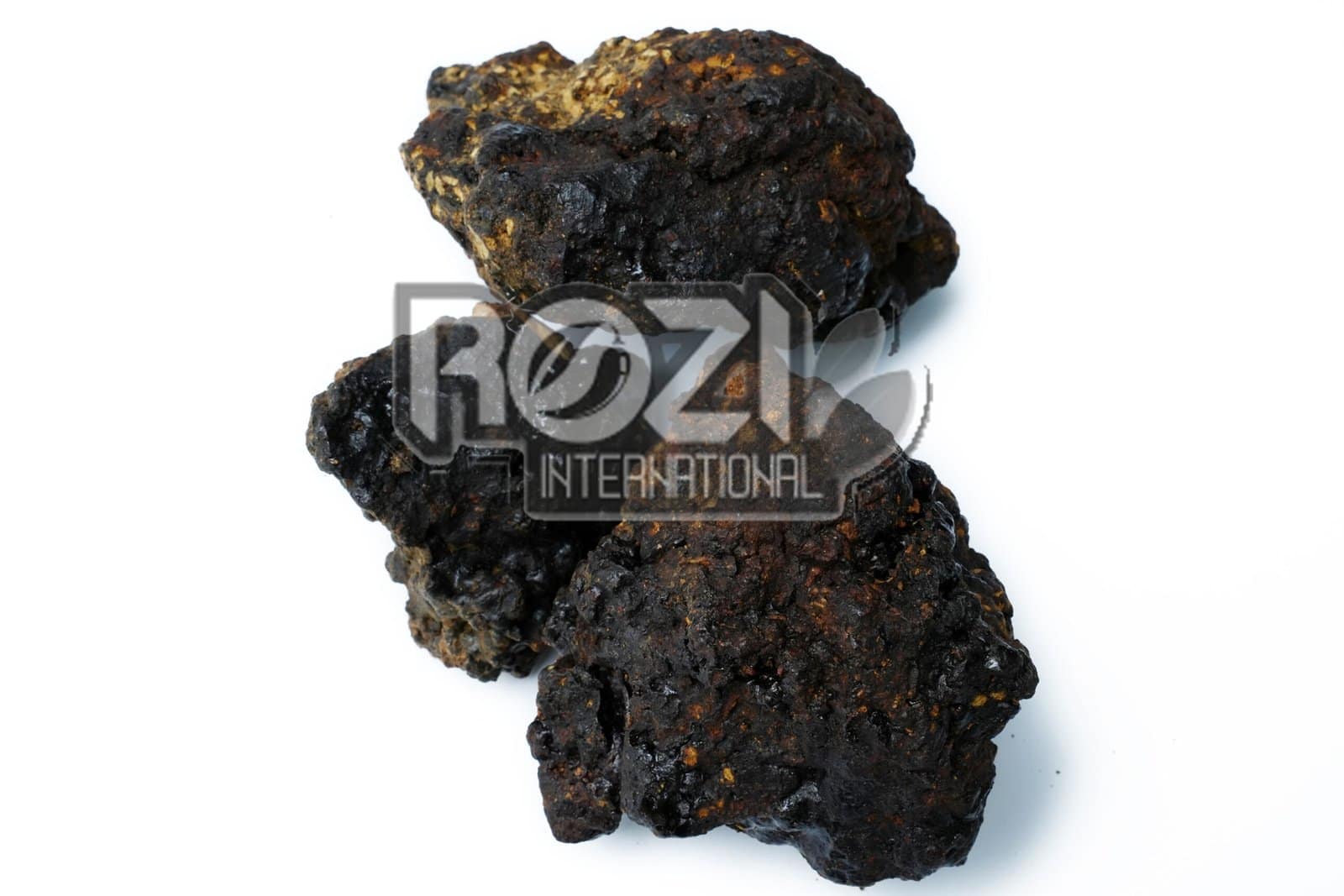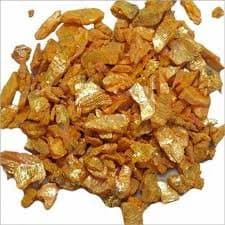Black Asphaltum/Asphaltum Punjabianum / Salajeet Stone
English Name: Black Asphaltum/Salajeet Stone
Botanical Name: Asphaltum Punjabianum
Local Name: Salajeet
Product Description
Shilajit, also called mineral pitch, is the result of a long process of breaking down plant matter and minerals. It is a sticky, black tar-like substance that comes from rocks in high mountains ranges. Shilajit was traditionally sourced in India and Tibet, though it is now found in many other countries.
Saljeet Stone is a premium natural material celebrated for its durability, elegance, and timeless beauty. Ideal for both interior and exterior applications, it offers a versatile solution for various construction and decorative projects. With its unique patterns and textures, Saljeet Stone brings a touch of luxury and sophistication to any space, whether used for flooring, wall cladding, countertops, or garden landscaping. Highly resistant to wear, weather, and pressure, it ensures long-lasting performance while requiring minimal maintenance to retain its natural charm. Eco-friendly and sustainable, Saljeet Stone harmonizes perfectly with nature, making it an excellent choice for both modern and traditional designs, offering a combination of functionality and visual appeal.
Orpiment Stone/Auripigmentum / Hartal Warkia
English Name: Orpiment Stone / Hartal Warkia
Botanical Name: Auripigmentum
Local Name: Hartal Warkia
Product Description
The name Orpiment is derived from the Latin Auripigmentum, meaning gold pigment, in reference to its color and historical use as a golden-yellow pigment. Orpiment is often associated with bright red Realgar, and may form in strikingly colored and unique mineral combinations. Orpiment occurs in hydrothermal veins at low temperature (up to 400°F/200°C), hot spring deposits, and volcanic fumaroles, and it may occur with stibnite and realgar. It also results from the alteration of other arsenic-bearing minerals. When heated, orpiment gives off the garlic odor typical of arsenic minerals.
Red Coral Stone/ Corallium Rubrum Linn / Jarh Marjan
English Name: Red Coral Stone
Botanical Name: Corallium Rubrum Linn
Local Name: Jarh Marjan
Product Description:
Jarh Marjan is a traditional blend of aromatic herbs and spices that embodies the rich flavors of Middle Eastern and North African cuisine. Carefully crafted with premium-quality ingredients, this spice mix delivers an earthy and savory taste, perfect for enhancing a wide range of dishes. Whether you’re preparing soups, stews, marinades, or grilled meats, Jarh Marjan adds a warm and authentic touch to every recipe. Its versatile nature makes it an ideal choice for seasoning vegetables, meats, and even bread dips. Packaged in a convenient resealable pouch, it ensures long-lasting freshness and aroma, making it a staple for anyone who loves authentic, flavorful cooking.

